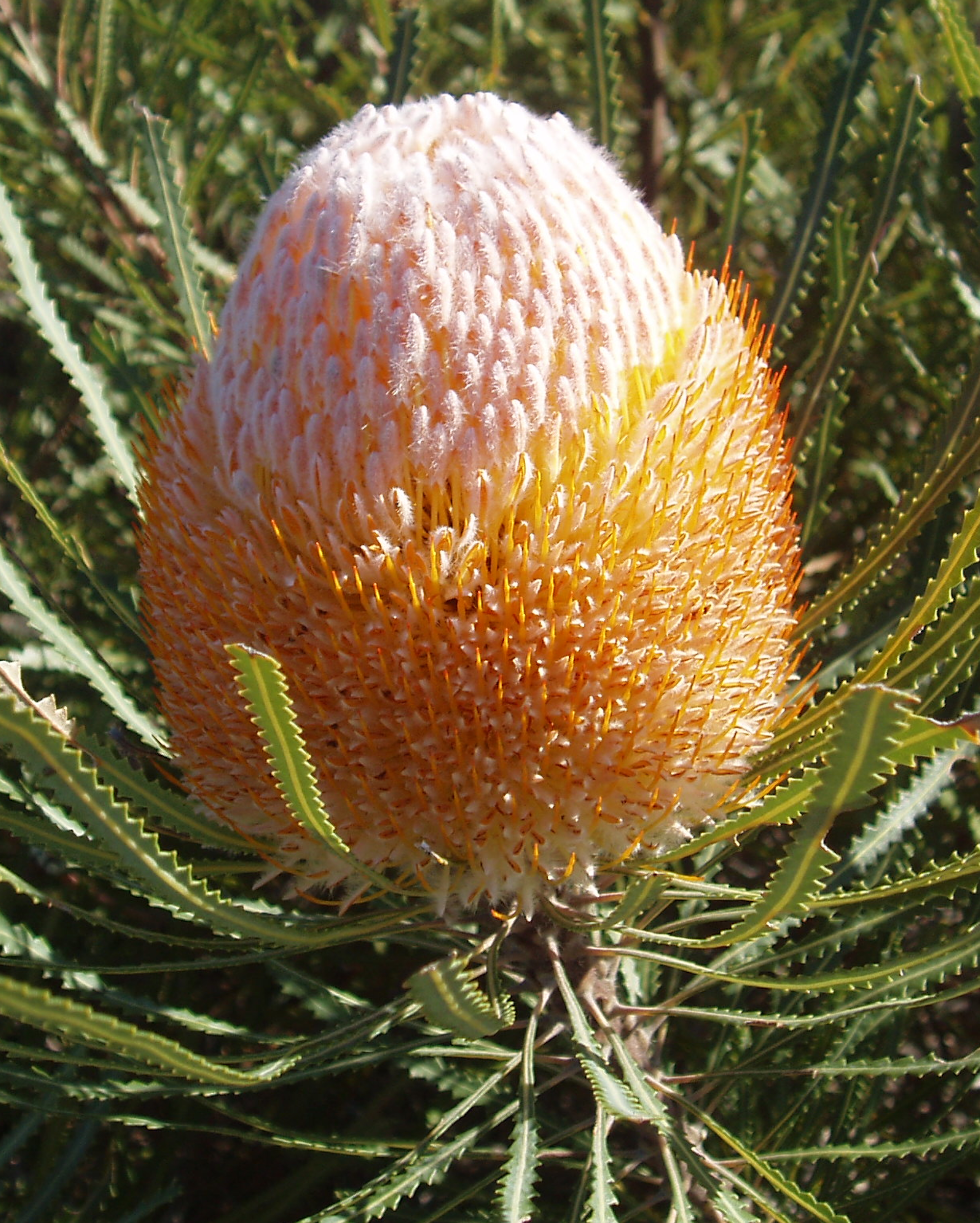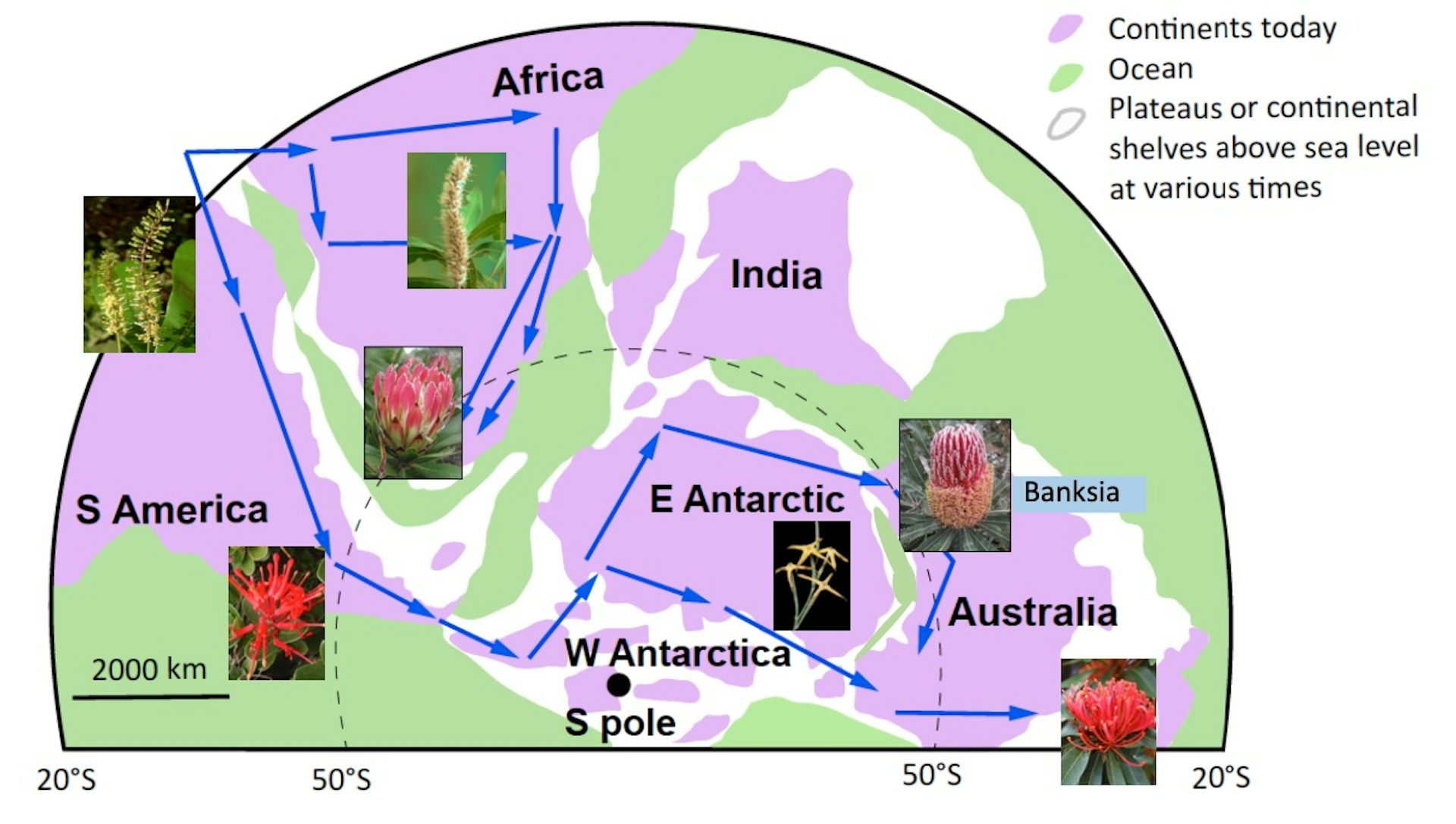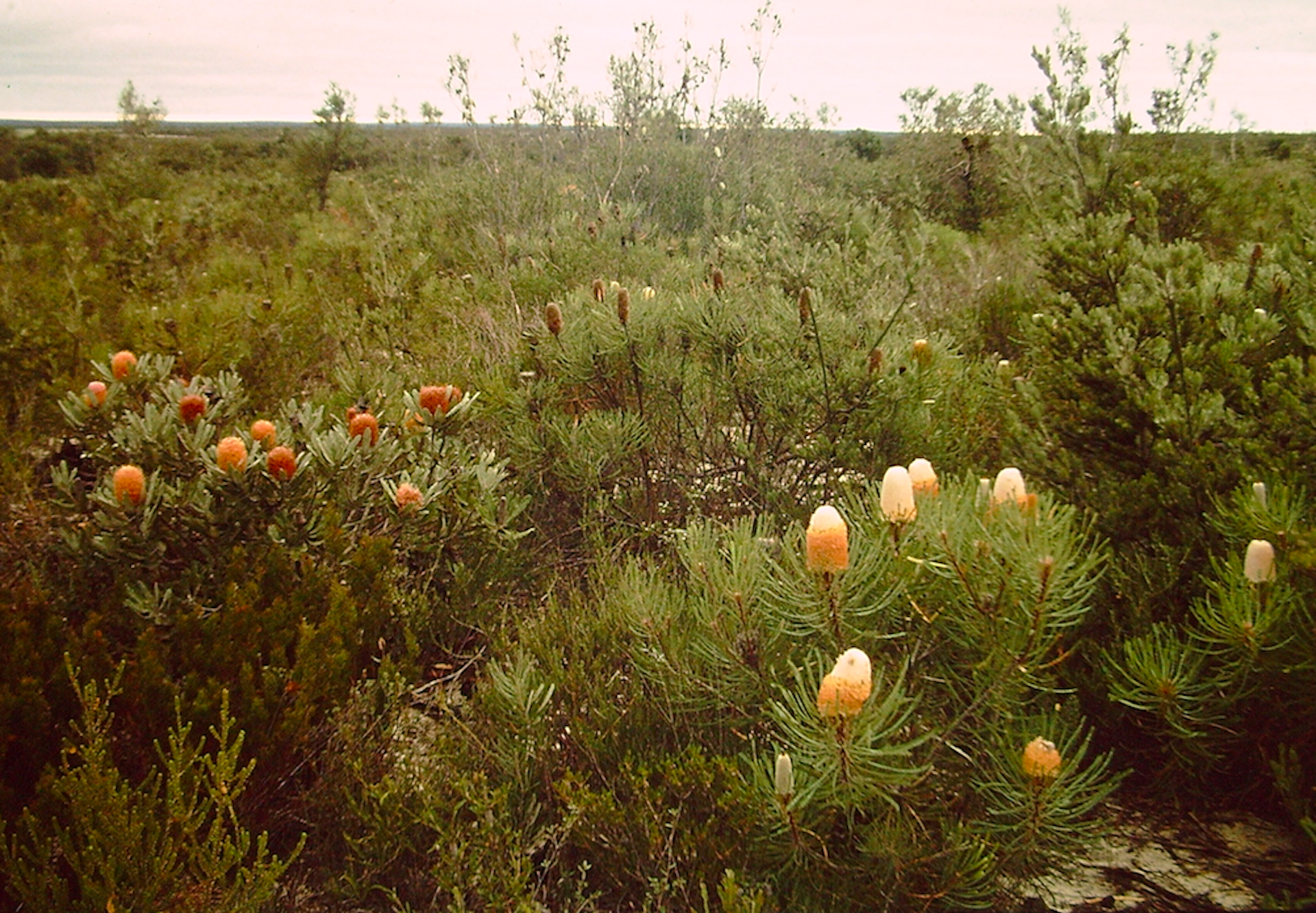Banksias are iconic Australian plants, but their ancestors actually came from North Africa
No real scientists these days sets out to refute creationism as such, but most do anyway, because creationism is so counter-factual that almost any scientific facts, especially in the fields of biology, cosmology, archaeology, geology and palaeontology refute it. It takes a resolute and determined ignoramus to not be aware of that. The problem creationists have is that they get all their beliefs from an ancient text that is demonstrably wrong, even when explained away as allegorical or metaphorical. It is neither. It is quite simply wrong on every level.
So, creationists are left desperately trying to defend the childishly absurd claim that the entire Universe, including Earth and all living things on it, were all created out of nothing in a few days, about 10,000 years ago, by a magic man also made of nothing who designed himself before he existed then self-assembled according to that plan, with all the complexity and information needed to create and micromanage an entire Universe.
This, despite the fact that there are fossil remains of plants and animals from hundred, even thousands of millions of years before then and despite the fact that all the evidence points to a long, slow, evolutionary process of divergence from a common ancestor that lived well over a billion years ago, which was itself the result of a symbiotic associations of much earlier organisms.
One such paper, which casually and incidentally refutes creationism, recently published in Perspectives in Plant Ecology, Evolution and Systematics by three Australian botanists and plant ecologists and a South African Professor of botany, traces the origin of the family of iconic Australian plants, the Banksias, to North West Africa, 132 million years ago.
The story of this migration meshes in with the sciences of plate tectonics and oceanography allowing the plants to migrate across then contiguous land masses from what is now North West Africa to what is now Australia via South America and Antarctica, as land-masses split and diverged and sea-levels rose and fell to reveal land bridges where there is now ocean.
How they discovered this is the subject of an article in The Conversation by the four scientists. Their article is reprinted here under a Creative Commons licence, reformatted for stylistic consistency:

Banksias are iconic Australian plants, but their ancestors actually came from North Africa
Byron Lamont, Curtin University; Lynne Milne, Curtin University; Richard Cowling, Nelson Mandela University, and Tianhua He, Murdoch University Few plants conjure up the Australian bush better than banksias, whose beautiful flowers are irresistible to honeyeater birds, small marsupials and nature lovers.
But our research, published in Perspectives in Plant Ecology, Evolution and Systematics, shows that the ancestors of banksias actually migrated here from North Africa.
From early fossil pollen studies, we already knew that the protea family (Proteaceae), which includes banksias, grevilleas, waratahs and macadamias in Australia, originated in northwest Africa 130 million years ago.
Our task was to track their migration to Australia, where they became the unique symbols of the Australian bush that we admire today. To give credit where it’s due, we need to know where our natural heritage originated. So, how did this iconic group of plants get here?
Looking at the entire family
Our study relied on two approaches. We used a DNA assessment of the entire protea family to create an evolutionary tree. Then we inserted key fossil pollen records of a known age into the tree, to serve as a “molecular clock”. This helped us work out the time of origin of all genera in this family.

Banksia hookeriana, the most important species used in the wildflower trade in Western Australia and now widely planted. This is the most studied of all members of the protea family.
Byron Lamont
This was made possible by the fact the hard walls of pollen grains allow them to be preserved for millions of years. Also, the pollen grains of plants in the protea family are quite distinctive from those of other families. We then compared the dates and locations of the fossil pollen against our family tree.
This showed that by 120 million years ago, the ancestors of banksias had begun crossing into northeast South America. The two continents remained joined at their tips until 100 million years ago.
The plants then migrated down the east side of South America – first reaching the Scotia Isthmus about 110 million years ago – and crossed onto the Antarctic Peninsula.
Two routes into Australia
Here, the ancestors separated into two groups. One, the soft-leaved group, followed a cool-temperate rainforest pathway (dark for up to four months of the year) along the south side of Antarctica. They entered Australia via Tasmania from 105 million years ago.
The rainforest elements continued up the east coast, with some eventually reaching New Guinea; others entered New Caledonian rainforests directly from southern Antarctica. This route remained open until 45 million years ago, when Australia and Antarctica finally separated.
The other, hard-leaved group followed an open, fire-prone woodland pathway along the warmer, sunnier northern side of Antarctica. They entered Australia via the southwest tip that remained attached to Antarctica until about 70 million years ago.
The two points of entry were separated by a huge inland sea that occupied the Great Australian Bight during that period.

Migratory pathway taken by the ancestors of banksias beginning 132 million years ago in north Africa. Note how the ancestors split into two groups on entering Antarctica from South America, banksia itself entering via southwest Australia and the rainforest species via Tasmania.
Modified from Lamont et al. (2024) Perspectives in Plant Ecology Evolution and Systematics
Since banksia itself appears to have arisen 100 million years ago, the genus either evolved in northeast Antarctica or at the extreme corner of southwestern Australia. From there, they spread to the rest of Australia over the next 50 million years.
Banksias now consist of around 200 species, 90% of which are endemic to southwestern Australia. Ancestors of the bulk of the hard-leaved genera, such as grevilleas, hakeas, macadamias and waratahs, also entered Australia via the southwestern tip. They then migrated east along the margins of the Nullarbor Plain – thickly vegetated back then – to southeast Australia.
Until the results of our new study, it was believed the protea family arose in Australia and spread from here to Africa, South America, New Caledonia and Asia. Almost all migration would have needed to be over the oceans, as it was thought to have happened after the breakup of the Gondwanan supercontinent.
In fact, the journey was entirely overland as it occurred when Gondwana was largely intact, except for the early departure of Greater India.

Banksia shrubland 300km north of Perth, Western Australia. Three species of banksia, about 1.5 metres tall, are present in this image as well as several other members of the protea family, such as Adenanthos and Xylomelum.
Byron Lamont
Anthropologists are keen to point to the “out of Africa” hypothesis for the origin and migratory history of humans. It now appears such a hypothesis is equally applicable to some important groups of plants.
This is the first time the southwest corner of Australia has been recognised as a major migratory route for the protea family.
We now need to take seriously the Antarctic–southwest Australian link as a likely major entry route for many other hard-leaved plant groups into Australia. They could have originated in Antarctica and South America, and possibly even Africa.
This north Antarctic pathway might well also apply to eucalypts, whose oldest records are for southern South America, as well as currently endemic animals and microbes.
Byron Lamont, Distinguished Professor Emeritus in Plant Ecology, Curtin University; Lynne Milne, , Curtin University; Richard Cowling, Professor, Nelson Mandela University, and Tianhua He, Senior lecturer, Murdoch University
This article is republished from The Conversation under a Creative Commons license. Read the original article.
HighlightsContrary to creationist claims that the peer-review process is like that fraudulent creationist disinformation sites claim to be 'peer-review', i.e., checking that it complies with pre-existing dogma, this peer-reviewed paper overthrows previously-held views that the Banksias originated in Australia and migrated by various possible routes to Africa and South America. By careful aging of pollen in sediments from sites along the migration routes, the team showed that the reverse chronology was a much better fit, as was the occurrence of closely related clades on different continents.
- We hypothesized that ancestors of the Proteaceae migrated from NW Africa to Australia via South America and Antarctica.
- The timing of these events was estimated from a molecular chronogram and an exhaustive account of fossil pollen whose ages and locations were known.
- The Proteaceae originated 132 million years ago (Ma), separating into three subfamilies by 122 Ma that entered South America overland, then Antarctica by 110 Ma, reaching Australia by 104 Ma.
- The sclerophyll element entered SW Australia from NE Antarctica while the rainforest mesophylls entered SE Australia via Tasmania from SE Antarctica.
- Massive extinction of Grevilleoideae in Africa, Proteoideae in South America and all subfamilies in Antarctica followed, but not Proteoideae in South Africa nor the three subfamilies in Australia.
- The evolutionary history of the Proteaceae is characterized by fireprone (sclerophylls)/non-fireprone (mesophylls) pathways conducive to intercontinental migration with parallel evolution in matched environments and massive extinction elsewhere.
Abstract
The centres of diversification of the iconic family Proteaceae are in South Africa and southern Australia. Since the ancestors of the family can be traced to NW Africa our task was to explain how all subfamilies (Proteoideae, Grevilleoideae, Persoonioideae) managed to reach Australia and we propose the pathway: (Africa (N South America (S South America (Antarctica (Australia))))). Our dated molecular phylogeny shows that the family arose 132 million years ago (Ma), and by 125 Ma had separated into the three subfamilies that remain dominant today. The age and location of records for 420 fossil pollen with Proteaceae affinities were collated per continent and submitted to curve-fitting analysis. This showed spread of early Proteaceae into N South America from ∼121 Ma that was able to continue for another 20–25 My. These three subfamilies (plus Carnarvonia) travelled south through South America and Antarctica, crossing the Weddellian Isthmus from ∼110 Ma, to reach southern Australia by ∼104 Ma. The history of Proteaceae in South America mimics that of Africa, where Grevilleoideae diversified instead of Proteoideae that died out. Entry to Australia via Antarctica was possible until ∼70 Ma at its SW corner and 45 Ma at its SE (Tasmanian) corner enabling the three subfamilies (and Carnarvonia) restricted entry into Australia over 35–60 million years. The SW Australian sclerophyll flora became the centre of diversification and emigration at the species level of all but the rainforest (mesophyll) Grevilleoid/Proteoid clades within Australia. Close genetic links between clades in South Africa (the centre of diversification of the sclerophyll flora in Africa) and SW Australia are the product of disparate migratory histories from their common ancestor in NW Africa, differential survival among subfamilies and parallel evolution in matched environments. SE Australia became the centre of diversification at the subtribe level. Close genetic links between clades in South America and SE Australia are the product of long-distance dispersal from their common ancestor in N South America, genetic stability in matched environments and eventual vicariance.
Lamont, Byron B.; He, Tianhua; Milne, Lynne A.; Cowling, Richard M.
Out of Africa: Linked continents, overland migration and differential survival explain abundance of Proteaceae in Australia
Perspectives in Plant Ecology, Evolution and Systematics, 62 125778. DOI: 10.1016/j.ppees.2024.125778
Copyright: © [year] The authors.
Published by [publisher]. Open access
Reprinted under a Creative Commons Attribution 4.0 International license (CC BY 4.0)
And this model meshes with what is known of plate tectonics and sea-level changes.
All creationists have to offer is a forlorn bleating about dating methods of which they have not the slightest understanding or the slightest clue how to go about substantiating their claims without wrecking another favourite assertion - the 'fine-tuned' fallacy.
What Makes You So Special? From The Big Bang To You
How did you come to be here, now? This books takes you from the Big Bang to the evolution of modern humans and the history of human cultures, showing that science is an adventure of discovery and a source of limitless wonder, giving us richer and more rewarding appreciation of the phenomenal privilege of merely being alive and able to begin to understand it all.
Available in Hardcover, Paperback or ebook for Kindle
Ten Reasons To Lose Faith: And Why You Are Better Off Without It
This book explains why faith is a fallacy and serves no useful purpose other than providing an excuse for pretending to know things that are unknown. It also explains how losing faith liberates former sufferers from fear, delusion and the control of others, freeing them to see the world in a different light, to recognise the injustices that religions cause and to accept people for who they are, not which group they happened to be born in. A society based on atheist, Humanist principles would be a less divided, more inclusive, more peaceful society and one more appreciative of the one opportunity that life gives us to enjoy and wonder at the world we live in.
Available in Hardcover, Paperback or ebook for Kindle





No comments:
Post a Comment
Obscene, threatening or obnoxious messages, preaching, abuse and spam will be removed, as will anything by known Internet trolls and stalkers, by known sock-puppet accounts and anything not connected with the post,
A claim made without evidence can be dismissed without evidence. Remember: your opinion is not an established fact unless corroborated.